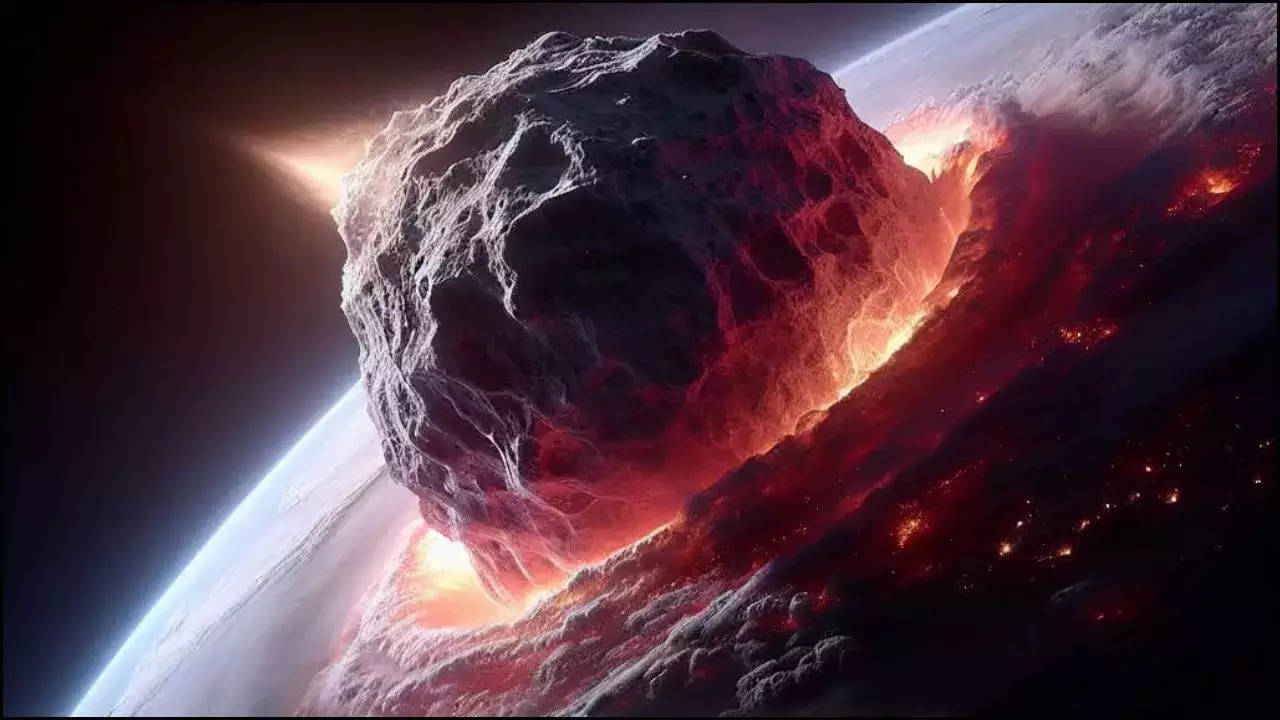[ad_1]
A colossal comet with a size reminiscent of a small city has explosively burst for the second time in the span of four months while hurtling towards the sun, reported Live Science. This celestial entity, known as 12P/Pons-Brooks, is categorized as a cryovolcanic comet, characterized by its solid nucleus measuring approximately 18.6 miles (30 kilometers) in diameter. Within its core lies a mixture of ice, dust, and gas, collectively termed cryomagma, while a nebulous gas cloud, called a coma, envelopes the nucleus and escapes into space.
When the comet’s interior is heated by solar radiation, pressure builds up within, resulting in a violent explosion that propels icy material into space through fractures in the nucleus’s shell.
On October 5, astronomers observed a significant outburst from 12P, causing the comet to shine many times brighter due to the intensified reflection of light from its enlarged coma, according to the British Astronomical Association (BAA), which has been closely monitoring this cosmic phenomenon.
Over subsequent days, the coma of the comet continued to expand and develop its striking “horns,” a feature that has been noted by Spaceweather.com. Some experts playfully likened the irregular shape of the coma to a science fiction spaceship, such as the Millennium Falcon from Star Wars.
The unusual shape of the comet’s coma is likely attributed to an irregularity in the nucleus’s shape, as explained by Richard Miles, a BAA astronomer. It appears that the outflowing gas is partially obstructed by a protrusion on the nucleus, and as the gas moves away from the comet, the irregularity in the coma’s shape becomes more pronounced and noticeable.
Currently, 12P is speeding toward the inner solar system, where it will be slingshot around the sun on its highly elliptical orbit, spanning 71 years, akin to the trajectory of the green comet Nishimura, which executed a nearly identical maneuver on September 17.
12P will reach its nearest point to Earth on April 21, 2024, possibly becoming visible to the naked eye before being propelled back towards the outer solar system. It will not return until 2095.
Remarkably, this marks the second time that 12P has displayed its distinctive “horns” within the year. On July 20, astronomers witnessed the comet’s first eruption in 69 years, primarily due to the infrequency and challenge of detecting its outbursts during the rest of its orbit. During that occurrence, the coma of 12P expanded to approximately 143,000 miles (230,000 km), approximately 7,000 times the width of the comet’s nucleus.
The exact size of the coma during the most recent eruption remains uncertain, but there are indications that this outburst was even more intense than the previous one, as noted by the BAA. The coma has likely returned to its typical size by now.
As 12P continues its journey toward the sun, there is a substantial likelihood of witnessing additional major eruptions. These future eruptions could potentially surpass the recent one in scale as the comet absorbs more solar radiation, as suggested by Spaceweather.com.
However, 12P is not the sole volcanic comet currently under scrutiny by astronomers. Another such comet, 29P/Schwassmann-Wachmann (29P), recognized as the most volatile volcanic comet in the solar system, has also experienced several notable eruptions in the past year.
In December 2022, 29P encountered its most significant eruption in about 12 years, expelling approximately 1 million tons of cryomagma into space. Furthermore, in April of the same year, scientists successfully predicted one of 29P’s eruptions before its occurrence for the first time, thanks to a subtle increase in the comet’s brightness leading up to the icy explosion.
When the comet’s interior is heated by solar radiation, pressure builds up within, resulting in a violent explosion that propels icy material into space through fractures in the nucleus’s shell.
On October 5, astronomers observed a significant outburst from 12P, causing the comet to shine many times brighter due to the intensified reflection of light from its enlarged coma, according to the British Astronomical Association (BAA), which has been closely monitoring this cosmic phenomenon.
Over subsequent days, the coma of the comet continued to expand and develop its striking “horns,” a feature that has been noted by Spaceweather.com. Some experts playfully likened the irregular shape of the coma to a science fiction spaceship, such as the Millennium Falcon from Star Wars.
The unusual shape of the comet’s coma is likely attributed to an irregularity in the nucleus’s shape, as explained by Richard Miles, a BAA astronomer. It appears that the outflowing gas is partially obstructed by a protrusion on the nucleus, and as the gas moves away from the comet, the irregularity in the coma’s shape becomes more pronounced and noticeable.
Currently, 12P is speeding toward the inner solar system, where it will be slingshot around the sun on its highly elliptical orbit, spanning 71 years, akin to the trajectory of the green comet Nishimura, which executed a nearly identical maneuver on September 17.
12P will reach its nearest point to Earth on April 21, 2024, possibly becoming visible to the naked eye before being propelled back towards the outer solar system. It will not return until 2095.
Remarkably, this marks the second time that 12P has displayed its distinctive “horns” within the year. On July 20, astronomers witnessed the comet’s first eruption in 69 years, primarily due to the infrequency and challenge of detecting its outbursts during the rest of its orbit. During that occurrence, the coma of 12P expanded to approximately 143,000 miles (230,000 km), approximately 7,000 times the width of the comet’s nucleus.
The exact size of the coma during the most recent eruption remains uncertain, but there are indications that this outburst was even more intense than the previous one, as noted by the BAA. The coma has likely returned to its typical size by now.
As 12P continues its journey toward the sun, there is a substantial likelihood of witnessing additional major eruptions. These future eruptions could potentially surpass the recent one in scale as the comet absorbs more solar radiation, as suggested by Spaceweather.com.
However, 12P is not the sole volcanic comet currently under scrutiny by astronomers. Another such comet, 29P/Schwassmann-Wachmann (29P), recognized as the most volatile volcanic comet in the solar system, has also experienced several notable eruptions in the past year.
In December 2022, 29P encountered its most significant eruption in about 12 years, expelling approximately 1 million tons of cryomagma into space. Furthermore, in April of the same year, scientists successfully predicted one of 29P’s eruptions before its occurrence for the first time, thanks to a subtle increase in the comet’s brightness leading up to the icy explosion.
[ad_2]
Source link





